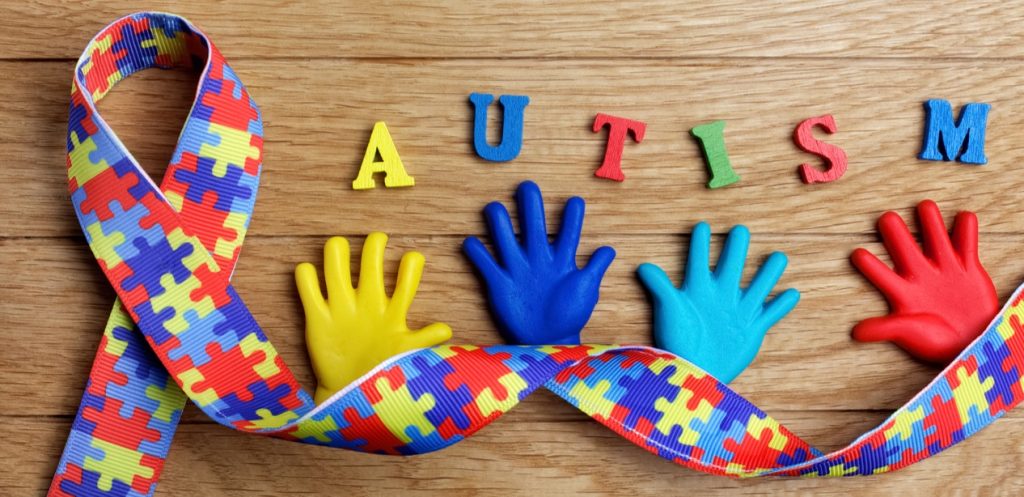One major deficit that children on the autism spectrum have is the ability to learn by observing the behavior of others around them. Observational learning is learning that occurs through observing the behavior of others, imitation of others, memorizing others reactions to specific environmental cues, and in turn performing those skills later on during social appropriate events.
As an example, a child invited to a birthday party by their classmate, starts to imagine what decorations will fill the room, who will be there and what games will they play together, what present they will buy to make their friend smile, and what fancy outfit will they choose to wear to look cool. All these notions, ideas, and concerns have been learned throughout the child’s past life experiences by observing their family members and peers; however, what happens when a child has difficulty attending to, imitating, and learning from others and the environment around them?
Children with autism and other related developmental disorders sometimes need more explicit instructions and repeated practice in order to learn.
Social expectations or the proper way to respond when interacting with others are typically learned by observation. Children with autism and other related developmental disorders sometimes need more explicit instructions and repeated practice in order to learn. Social Stories as the name implies, they are brief descriptive stories that provide accurate information regarding a social situation. Social stories are meant to help children understand social situations, expectations, social cues, new activities, and everyday social rules. Knowing what to expect can help children with autism act appropriately in a social setting. Parents, teachers, and caregivers can use these simple stories as a tool to prepare their child for a new situation, to address problem behavior, or even to teach new skills.
Carol Gray, author and teacher, developed Social Stories and Comic Strip Conversations strategies that are used worldwide with children, adolescents, and adults with autism spectrum disorders. She states a social story should include 4 types of sentences; Descriptive, Perspective, Affirmative, and Directive. Descriptive sentences define: where a situation occurs, who is involved, what they are doing, and why. Perspective sentences refer to or describe details on the reactions and emotions of others in a given situation. Affirmative sentences enhance the meaning of the other sentences by expressing a commonly shared value or opinion. Directive sentences positively state suggested responses or choices to a situation or concept, and guides the behavior of the child.
Here is an example of a birthday party social story for a 6 year-old girl with autism. She has trouble sharing toys, allowing others to open presents and not playing with them, and ending activities she enjoys.
My name is Amy.
My friend Sally invited me and my classmates to her birthday party.
Sally is friendly and likes to play with dolls. I will get her a doll for her birthday and give it her wrapped to make her smile at her party.
I can’t play with her doll at the party, but I can bring my own if I want to share with my friends and play together.
Playing and sharing my toys with my friends makes everyone smile and we all have fun!
Sally’s party will start at Toy Town with a magic show and I will have to sit with my friends and listen to the magic man.
I will sit with my friends and if I need to get up I can get up and go walk quietly with my mom.
After the magic show, I can play in Toy Town and then sing and eat cake with my friends.
I love to sing and I love cake. I can talk to my friends in my seat while everyone eats.
I will have fun and say goodbye when the party is over and mommy tells me it is time to go.
The above social story is individualized to the child’s comprehension level and personality. Social stories can also include pictures of the actual persons, places, and objects to accompany each sentence or thought. The story should be written in third person to create a connection between the child and the social rule or situation to be learned. Introduce the social story to the child or create it with the child in a positive manner, and read and role play multiple times before the new event or until a new skill is mastered. The social story can become a part of the child’s library, thus allowing for continuous access for the child to look through and explore the pictures independently.
I hope you have enjoyed learning a simple and easy way to explain the everyday to a child with autism.







Awesome post! Join the fun at https://sugongfang.com for up to R$1,000 welcome bonus, progressive jackpots, and instant PIX withdrawals. Date: 2025-10-27 20:51:05 (-03).
Awesome post! Join the fun at https://meucassino.org for up to R$1,000 welcome bonus, progressive jackpots, and instant PIX withdrawals. Date: 2025-11-12 23:52:11 (-03).
好文!2026年世界杯越来越近了,让我们共同期待这场全球足球盛宴。日期:2025-11-18 19:36:55 (-03)。
Awesome post! Join the fun at https://motagascassino.com for up to R$1,000 welcome bonus, progressive jackpots, and instant PIX withdrawals. Date: 2025-11-20 01:42:45 (-03).
Awesome post! Join the fun at https://denemebonusufreebet.com for up to R$1,000 welcome bonus, progressive jackpots, and instant PIX withdrawals. Date: 2025-11-27 00:56:28 (-03).
Awesome post! Join the fun at https://uoo-owhatsapp.com 在 WhatsApp 网页版中,您可以通过关键字即时检索聊天信息。 . Date: 2025-12-01 18:37:36 (-03).